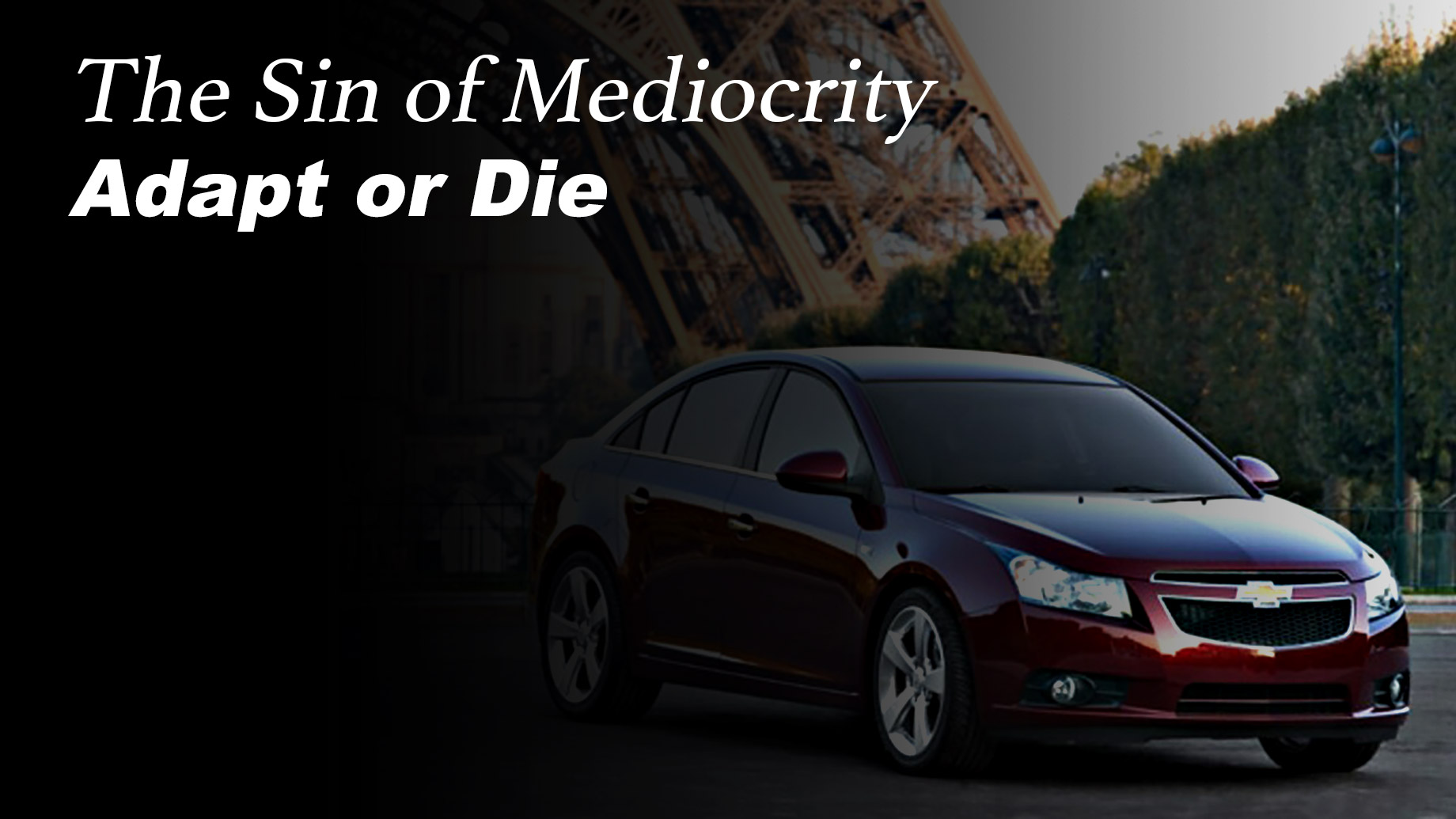
We live in a new world that demands the best. To this end, we should take a leaf from the book of the Chevrolet Cruze on what not to do. What does a nondescript motorcar that most people haven’t heard about have to do with adding value to the world in relevant ways? Your first clue is that you agree with ‘nondescript’. The second clue is that, although little was wrong with the car itself, it was on sale in the USA for three short years, not the typical five to seven, before being quietly shelved.

Allow us to elaborate on what seemed to be a perfectly adequate car, which was ultimately not the greatest success. When the Cruze launched in 2010, it was already, regrettably, forgettable. Every review found the driving experience to be dull and it performed poorly in reliability surveys. A second-generation model was launched in 2016. Sadly, in a now-SUV-obsessed world, ‘adequate’ no longer cut it in a market where competition for dwindling sedan sales is rife. Vehicles such as the Toyota Corolla and Honda Civic were, by comparison, far better than the Cruze. By 2019, the Chevy Cruze was dead.
The ‘Also-rans’ Will Be Forgotten
Nobody remembers the athlete that ran in the race and finished somewhere near the back. Those who compete, but don’t really feature in the top ranks, aren’t particularly memorable. This is especially true if you launch a product into a fiercely competitive market where the contestants battling it out for top honors already punch above their weight. The sedan market is dying and the Cruze was cynically lobbed into it with virtually no exceptional properties and no USP. Its performance was average, safety features were lacking, and, considering its MSRP, it wasn’t great value. At least it had an engine offering decent fuel economy and cargo space was decent, but good MPG figures and a big trunk cannot be a car’s only redeeming features.
Consider real estate. The standards of sustainability and sustainable construction models are higher than ever, and now extend to every part of development. Sustainable housing developments all have an increasing number of things in common nowadays. Here are just a few, which, by cause of importance to a responsible future, is now more desirable than ever, rising above the mediocre we have become used to:
- Power, heating, and cooling. Heating and power systems increasingly make use of renewable energies like wind, solar, and geothermal and these principles can no longer be ignored. Some buildings already generate all their own electricity using wind turbines and solar panels integrated into the design from the first stroke of the planner’s pen. Old, inefficient boilers are being discarded in favor of condensing boilers, which are far more efficient. In the interest of reducing energy consumption for cooling, insulated glass is increasingly being used, especially in hot climates. Energy losses through the glass can be reduced by as much as 50% if a low-emissivity coating is added. Apartment blocks can be positioned to cast shade on each other, further reducing the demand for cooling energy.
- Net-zero housing developments. The state of California’s legislation required that all residential buildings should be of the net-zero-energy type by 2020 already, which shook up the market. These properties, therefore, consume no more energy than they create. The properties that make these buildings sustainable must be baked into the original design. Environmentally friendly materials must be used for foundations and walls, the living spaces must be air-tight, and the roof-tile design must be of the heat-reflective type.
- Biophilia. Building occupants’ health is improved by their connection with nature and by the use of all their senses. Creating buildings in this way, incorporating plants, stone, and water, is called biophilic design. It improves air quality and boosts residents’ mental and physical well-being.
Success by Design

Perhaps one day, there will be another Chevy Cruze. Although, judging by the legacy left by the ones that went before, Chevrolet might not want to reuse the name. Still, that car won’t have a mediocre design or develop class-average horsepower. In a perfect world, it will be an electric vehicle, built from sustainable materials, with a cobalt-free battery, and seats made from recycled plastic bottles. It will be a desirable product that people would actually want to take for a test drive. Its owner will live in a sustainable housing development with EV charging stations on the property. It will lead by design and not be a cynical, half-baked, minimum viable product. At least that’s what we can hope for. We can all learn from others that have committed the sin of mediocrity.